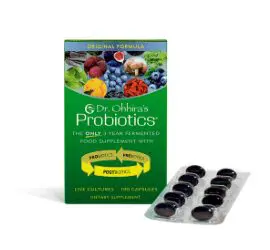March 13, 201
Postbiotics—the metabolites and/or cell-wall components released by probiotics—have been touted to play a more active, upgraded role, surpassing probiotics as a way to enhance functional food.
Researchers think these components affect a wider range of physiological processes, proving useful in microbial-free food supplements for example despite its actions remaining partially understood.
“Soluble factors have been collected from several bacteria strains that include short chain fatty acids (SCFAs), enzymes, peptides, endo- and exo-polysaccharides, vitamins and organic acids,” said the team co-lead by Dr Belinda Vallejo-Cordoba, principal investigator at the Center for Research in Food and Development (CIAD) in Mexico.
“Postbiotics possess several attractive properties such as clear chemical structures, safety dose parameters, and longer shelf life (up to 5 years, when used as ingredient for foods and beverages or as nutritional supplements) that are greatly sought out.”
Probiotic challenges
The review, published in the journal Trends in Food Science & Technology, makes a case for greater efforts to apply postbiotics in food, supplement and even nutraceutical-based applications.
The team outlined some of the issues currently surrounding probiotic-containing functional foods. These include the occurrence of antibiotic resistance genes in some probiotic strains.
They thought the potential exists to pass the antibiotic resistance genes to pathogenic bacteria through horizontal gene transfer.
Other concerns were maintaining bacteria viability during product manufacturing and storage.
Probiotics are not only sensitive to other microbial species present, but factors such as final acidity of the product, availability of nutrients, growth promoters and inhibitors, greatly affect probiotic levels in the product.
“Probiotics have limited shelf-life, requiring overages (costs) and limiting delivery forms (e.g. beverages) and combinations with other ingredients,” said Dr Ralf Jaeger, co-founder and partner of Milwaukee-based consultancy Increnovo.
“Efficacy is limited by gastric survival: only 10-25% survive passage through stomach and upper intestine (acidity, proteases, bile acid).
“Using postbiotics eliminates the need to keep the probiotics alive, and would allow for totally different set of food products, that are up to this point impossible to achieve for probiotics.”
Reports mention that postbiotics such as the peptides bacilysin and chlorotetaine show antimicrobial properties, are water soluble and active over a wide pH range.
In addition, the use of selected phytase-producing lactic acid bacteria as starters for breadmaking have been reported as good alternatives for preparing whole wheat bread with low phytate content.
Safety First
The Mexico-based team also cite postbiotics’ favourable safety profile as a selling point.
They comment that postbiotics can be applied in a controlled and standardised manner, whereas, in the case of the application of living bacteria, the level of the active structure in the intestine is dependent on the number and metabolic activity of the respective strain.
“Thus, selected soluble factors from specific bacteria may become a class of bacterial biological strategy for treating many diseases,” they said.
“However, a big challenge is translating scientific knowledge into commercial applications and thus bridging science and industry.”
A raft of postbiotic products with pharmaceutical applications are available commercially, setting up a starting point for possible moves into the neutraceutical sector.
German pharma company Laves-Arzneimittel produces Colibiogen, a protein-free filtrate made from from cultures of Escherichia coli (strain Laves 1931) that contains amino acids, peptides, polysaccharides and fatty acids,
The product has been shown to be effective in inhibiting sensitive Salmonella isolates and to reduce skin lesions in patients with polymorphous light eruptions.
BioRay, the US makers of CytoFlora, use a preparation of micronized cell wall lysates containing L. rhamnosus, B. bifidum amongst others to correct intestinal dysbiosis and promote a balanced immune response.
Personal Care Postbiotic Products
“Probiotic cell lysates may contain hyaluronic acid, sphingomyelinase, lipotechoic acid, exopolysaccharides, peptidoglycan, lactic acid, acetic acid and/or diacetyl, that can be harnessed to provide skin benefits such as skin-rejuvenating properties, improving skin innate immunity and protecting against photodamage,” the review commented.
“Many studies and patents have been published on the use of probiotics extracts to development of personal care products including oral, underarm (deodorants and antiperspirants) and skin products.”
The team had not discounted probiotics entirely though. Genetic manipulation was mentioned in the development of novel bioengineered probiotic strains capable of producing disease-fighting metabolites
Genetically modified lactic acid bacteria has been used for intestinal delivery of antimicrobial peptides, angiotensin-converting enzyme inhibitory peptides and cancer-suppressing peptide KiSS1.
There, the team said lies the promise of viable strategies for the treatment of enteric infections, hypertension, colon carcinoma and autoimmune diseases such as Type 1 diabetes mellitus.
“Most of the time it’s not easy to link the benefit of a probiotic to one specific postbiotic,” added Dr Jaeger.
“Supplementing with that postbiotic doesn’t mean that the postbiotic will be absorbed the same way, as if it would be “freshly” produced by a living bacteria inside the GI tract.
“Postbiotics offer benefits in regards to stability, however, regulatory, safety and efficacy need to be evaluated on an individual basis.”
Source: Trends in Food Science & Technology
Published online ahead of print: doi.org/10.1016/j.tifs.2018.03.009
“Postbiotics: An evolving term within the functional foods field.”
Authors: J.E. Aguilar-Toalá, R. García-Varela, H.S. García, V. Mata-Haro, A.F. González-Córdova, B. Vallejo-Cordoba, A. Hernández-Mendoza,





